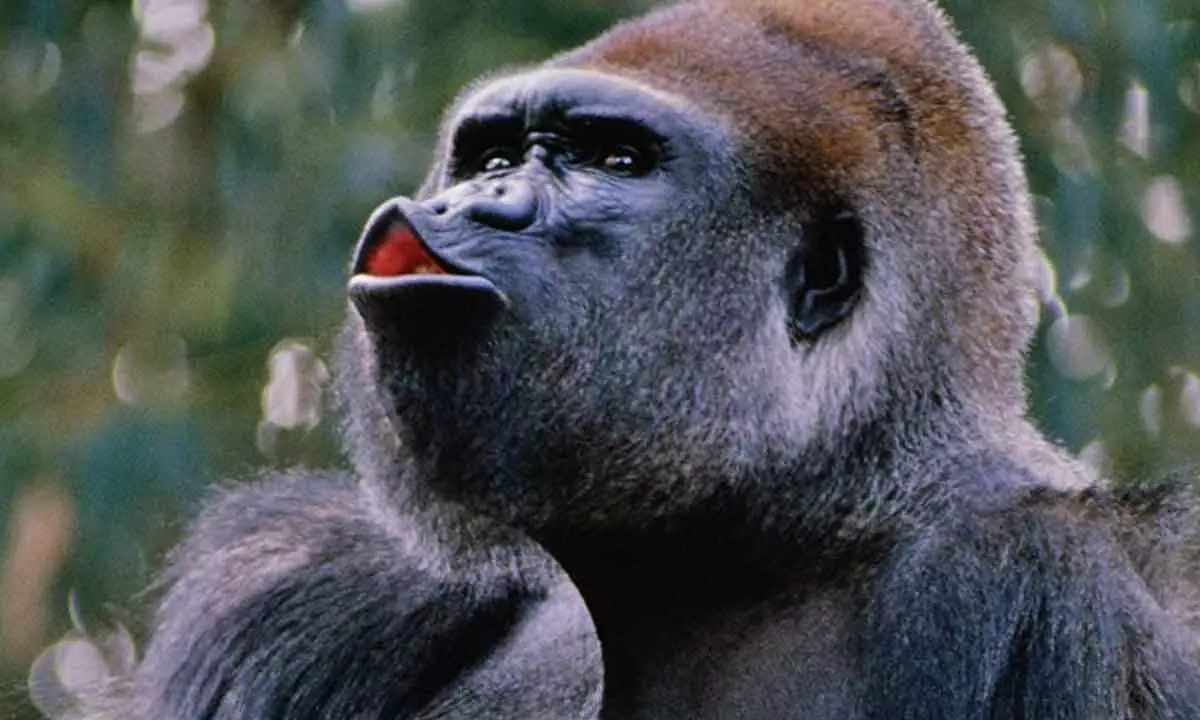Live
- First Star Outside Milky Way Captured: WOH G64 is 2,000 Times Larger Than the Sun
- Sikkim govt to constitute state Niti Ayog: CM Tamang
- CBI books Rajasthan narcotics inspector for Rs 3 lakh bribe
- Rajasthan bypolls: A tough contest between BJP and Congress
- Albania joins SEPA, paving way for EU integration
- Japanese government approves 250-billion USD economic package to ease price pain
- Six pharma companies to set up their units in Telangana
- The Unstable Events of a 17-Wicket Day in Perth: India vs Australia
- Dutch FM's Israel trip cancelled after Netanyahu's arrest warrant
- UK to increase energy price cap by 1.2 per cent
Just In
Research Found Special Vocalisation Developed By Gorillas To Attract Zookeepers' Attention


(Jupiterimages/Getty Images)
- A recent discovery found Western lowland gorillas at Zoo Atlanta have been observed calling out to their keepers with an odd cough-sneeze hybrid.
- Only two other species—chimpanzees kept in zoos and orangutans—have demonstrated this capacity to invent novel vocalisations to catch our attention.
A recent discovery found Western lowland gorillas at Zoo Atlanta have been observed calling out to their keepers with an odd cough-sneeze hybrid. Only two other species—chimpanzees kept in zoos and orangutans—have demonstrated this capacity to invent novel vocalisations to catch our attention.
Gorillas can now be included on that list. Sukari, a 24-year-old female gorilla, displays the gorilla counterpart of a human "ahem," or "snough," in a video.
As many of us are aware, Koko's amazing capacity to use sign language to communicate with people in the 1980s and 1990s brought attention to gorilla intelligence. She put a lot of training and effort into it, but it appears that gorillas have taken it upon themselves to develop special contact with humanity on their own terms.
Roberta Salmi, a biological anthropologist at the University of Georgia, and her team conducted an experiment using eight gorillas from the zoo in three distinct settings to determine the function of the "snough." Only the keeper was represented in the first, the food was the only thing present in the second, and the keeper was holding the food in the third. When present, the food and keeper were visible but out of reach.
The gorillas in question tended to make the ahem-like "snough" vocalisation when a person was nearby with food, suggesting the cry is probably an effort to attract the keeper's attention. The research team is unsure whether this sound has spread because different groups have discovered it on their own or because intelligent primates—who are more than capable of learning from one another—have passed on their knowledge to one another.
The majority of language's constituent parts, such as vocal learning, grammar, and semantics, do appear in other creatures' communication systems. It was originally believed that non-human primates lacked the tools necessary to vocalise in the same manner as humans, however this has since been disproved.
No evidence of the gorillas communicating with one another using "snough" has ever been found. The originality of this call adds to a growing corpus of research showing that monkeys are vocal learners and may create new sounds for various situations.
However sparse, evidence of vocal learning and/or creativity in captive gorillas is progressively accumulating. Meanwhile, Gorillas can recognise and distinguish between the sounds of several humans, according to earlier studies.

© 2024 Hyderabad Media House Limited/The Hans India. All rights reserved. Powered by hocalwire.com






